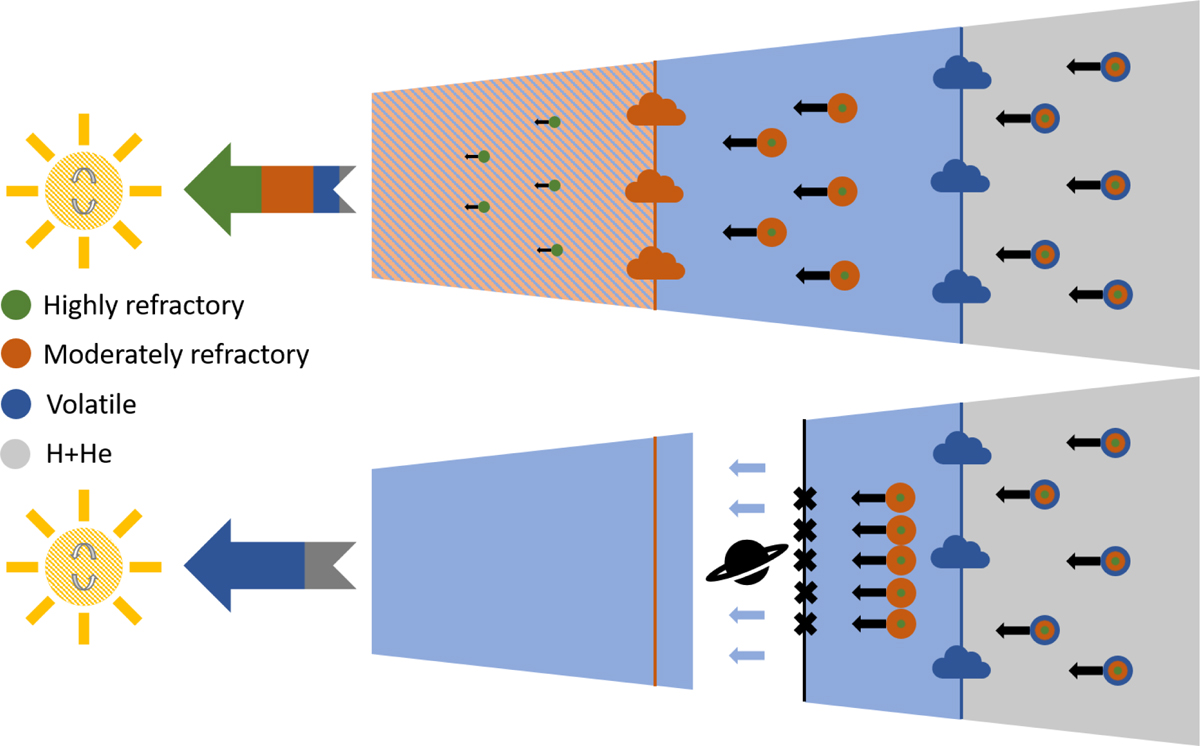Fig. 1

Download original image
Qualitative illustration of the impact of dust drift and planet formation on the composition of material accreted by the host star. The top part shows the drift of pebbles consisting of three different chemical species, a volatile one (blue), a moderately refractory one (orange) and a highly refractory one (green). The ice lines of the blue and orange species are shown with vertical lines of the corresponding color, while the background color of the disk indicates the gas components. The green species does not evaporate in the disk. More refractory species drift further before evaporating at the ice line, enriching the accreted material more strongly than volatile species. The bottom illustration shows how a giant planet core at pebble isolation mass changes the accreted material’s composition. The volatile component evaporates before the pebbles reach the planet’s pressure bump, allowing diffusion past the planet’s orbit and onto the star. The orange and green species are solid at the pressure bump location and blocked from further accretion. Therefore, the accreted material is no longer enriched in the moderately (orange) and highly refractory (green) species.
Current usage metrics show cumulative count of Article Views (full-text article views including HTML views, PDF and ePub downloads, according to the available data) and Abstracts Views on Vision4Press platform.
Data correspond to usage on the plateform after 2015. The current usage metrics is available 48-96 hours after online publication and is updated daily on week days.
Initial download of the metrics may take a while.


